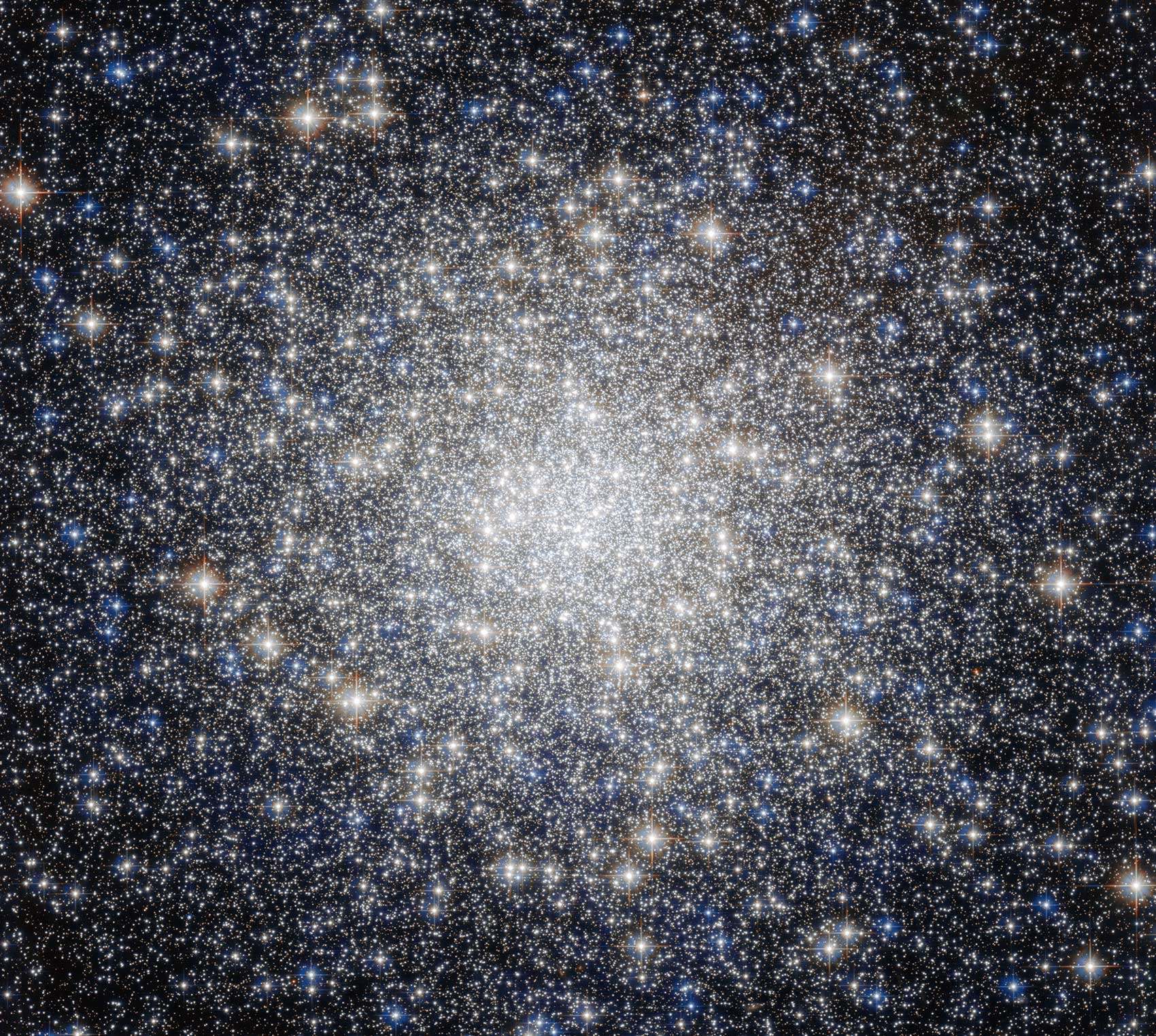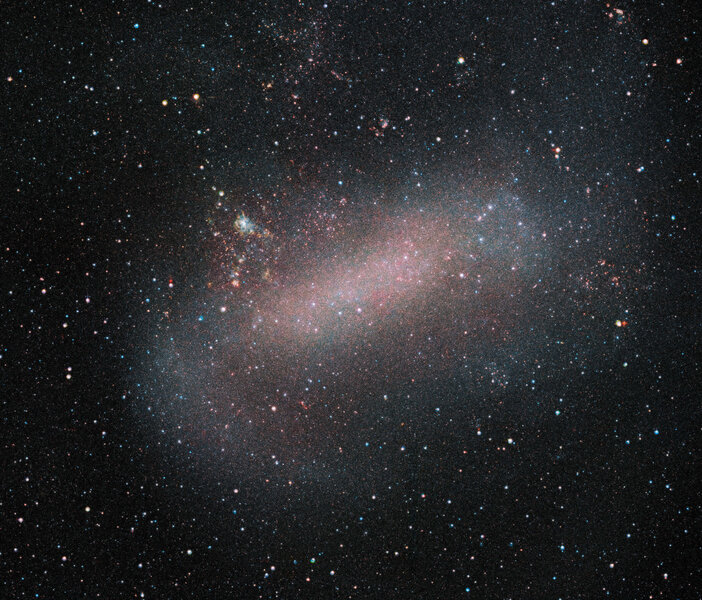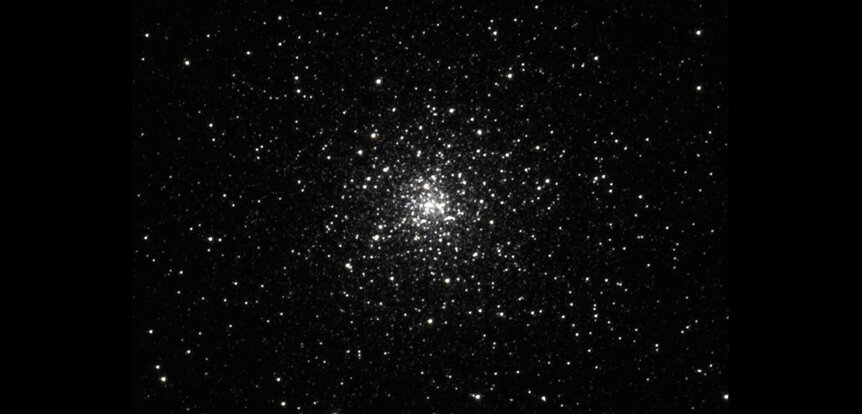Create a free profile to get unlimited access to exclusive videos, sweepstakes, and more!
It's galactic cannibalism all the way down
A satellite galaxy of the Milky Way ate a satellite galaxy of its own.

Our home galaxy is the Milky Way, a truly immense structure over 120,000 light years across. We don't think galaxies as big as ours form all at once, but instead start off as a collection of smaller galaxies that collide, merge, and grow that way.
We see evidence of this by looking in the distant Universe; light takes so long to get here from there that we see galaxies as they were when the Universe was young. The galaxies in images like that tend to be smaller and less well structured, indicating that in general bigger galaxies take a while to grow.
It's possible, even likely, that smaller galaxies grow that way as well. For example, there are dozens of smaller galaxies orbiting our own, and the biggest of these is the Large Magellanic Cloud, what was once thought to be irregular in shape but is now considered the prototype of a class of dwarf galaxies that have one spiral arm (called Magellanic spirals). It's much smaller and less massive than the Milky Way, but still substantial: It has something like three billion times the mass of the Sun in stars* and probably 100 billion solar masses worth of gas, dust, and dark matter as well.
Did it form that size, or grow through mergers itself? To see if they could find out, a team of astronomers looked at 11 very old globular clusters in the Large Magellanic Cloud (let's call it the LMC from here on out). Globular clusters are collections of hundreds of thousands or even millions of stars held together by their mutual gravity, and most are quite old, forming around the same time as galaxies do, 12 billion years ago or so. They orbit galaxies; the Milky Way has at least 160, and the LMC has quite a few as well.
The idea here is that if the LMC merged with another galaxy long ago, any globulars that other galaxy had might have survived to this day. If that other galaxy formed under different conditions, the stars in the globular would be different chemically from stars native to the LMC; in other words the ratio of elements in them would be different.
This can be measured using spectra, breaking the light up of stars into hundreds or thousands of individual colors; different elements absorb different colors of light, and so spectra tell us what elements are in those stars.
They looked at spectra of the 11 LMC globulars, and found that 10 of them were pretty similar to each other, but one, called NGC 2005, stood out chemically speaking. It's a decently big cluster, about 250,000 solar masses, and is located close to the center of the LMC, just 750 light years from it (in projection; we can't actually see the third dimension so it might be in the foreground or background, and farther away from the LMC center).
NGC 2005 systematically shows much lower abundances of many elements across the board, including silicon, calcium, copper, cobalt, and more. That means it's very likely to have formed differently, in a different galaxy.
To see what kind of galaxy that might have been, the astronomers then computed models of what kinds of elements stars are likely to have if they formed in different galactic environments. Using LMC-like conditions, their models fit the 10 "normal" globular clusters well (so that's a nice test). But for NGC 2005, they found the best fit is for it to have formed in what's a called a dwarf spheroidal galaxy: small, dim, and with very low rates of star formation.
This isn't conclusive, but it does strongly imply that long ago, the proto-LMC collided and merged with a dwarf spheroidal galaxy. The majority of the stars in it were subsumed into the LMC itself, but the gravity of NGC 2005 was able to hold the cluster together all these eons — making it indigestible — so it survives today. If true, it does show that smaller galaxies like the LMC can grow through collisions just like the big ones like the Milky Way.
It also means that NGC 2005 was witness to the LMC eating its host galaxy. I know I'm anthropomorphizing here, but yikes.
I wonder, though... if only one globular remains from such a collision, and so many others are indigenous to the LMC, that also implies that the LMC perhaps didn't grow much by eating other galaxies, or at least by eating galaxies with lots of globulars that could survive to today.
But now that we've seen that small galaxies can grow this way, there are more questions to answer. Does size matter? There's also a Small Magellanic Cloud, and it forms a sort of binary system with the LMC. Does it have alien globulars in it? What about any of the dozens of even smaller satellites around the Milky Way? And how much did they grow by galactic cannibalism as opposed to how big they were born?
As usual, answering one question leads to many more. But at least we know we can ask these questions. Hopefully, with more observations, we can answer them as well.
*Stars come in a huge mass range from less than a tenth the Sun's to more than 100. The lower mass ones are faint and harder to see, so we generally refer to the total mass of stars in a galaxy and not the total number.




























